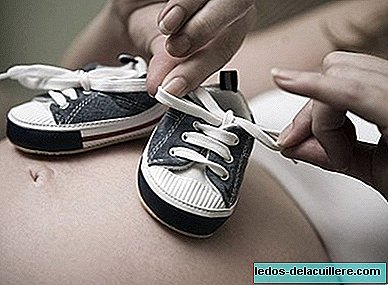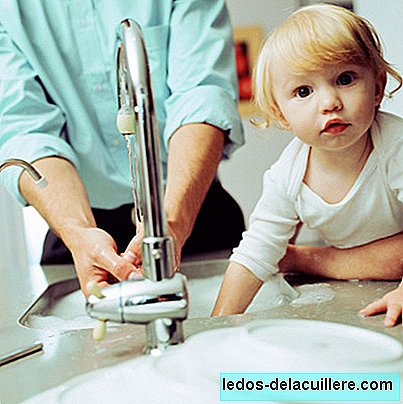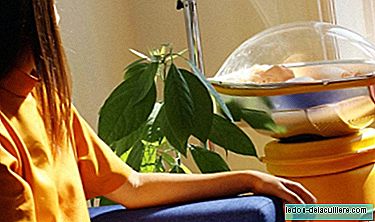
The arrival of wet wipes in the world of babies was a real revolution in terms of comfort for parents, because thanks to them it is possible to clean the butt and genitals of babies without looking for a basin, a sponge and a little soap on every diaper change.
The problem is that since many girls arrived they are suffering from more minor lip synechiae and some babies are suffering allergic contact dermatitiscaused by a preservative of the wipes, as explained in a recent study.
Methylchloroisothiazolinone, guilty
Methylchloroisothiazolinone, or MCI, is a preservative that is often used in combination with other preservatives in personal or household care products, and preservatives are a common cause of allergic contact dermatitis.
Recently, in order to try to minimize such reactions, many manufacturers decided to eliminate other preservatives increasing the amount of MCI. This has also happened with wet baby wipes, which many people use and that is why, because they are widely used, they are considered harmless.
However, although no cases of contact dermatitis had been reported before (which does not mean that there is none), the researchers of the study we are discussing today They managed to find 6 children with chronic dermatitis in the perianal area and on the face that did not improve with antibiotics or topical and oral corticosteroids.
None of them already had diapers, since they were between 3 and 8 years old, but apparently their parents continued to use the wipes to clean the culete and face after eating or after staining with whatever. At the moment the wipes were removed dermatitis healed quickly and completely.
Allergic contact dermatitis is usually diagnosed as impetigo, eczema or atopic dermatitis (misleading the fact that there is dermatitis in areas far from the butt) or psoriasis, but not treating these diseases do not react well to their treatment.
Two brands of wipes
The wipes involved in the six cases belonged to two different brands: Huggies and Cottonelle. The funny thing, or maybe not so much, is that both are manufactured by Kimberly-Clark Corp., and both, as expected, contain the MCI preservative.
But beware, they are not the only ones. It is estimated that half of all wipes sold in the US contain said preservative, so it is very possible that when faced with a study with more children, more cases were observed with other brands of wipes.
For its part, Kimberly-Clark has assured that they are working to use other preservatives. Apparently, within a month they will start marketing new MCI free wipes (also in Europe).
Dr. Mary Wu Chang, one of the authors of the study, comments the following:
More and more people use these products and become sensitive to the preservative ... with the increasing sales and popularity of disposable wet wipes for all ages, more people are likely to contract allergies to the preservative.
The possible cause is that, by avoiding other preservatives and choosing MCI as a sole preservative, many manufacturers they increased the amount of this preservative in their products, in some cases going from using concentrations of 3.7 parts per million to 100 parts per million. Such an increase, which they can do whenever they want, since there is no consensus on the preservatives that should be used or avoided in the wipes, supposed that some children, especially sensitive to him, suffered allergic contact dermatitis, with symptoms such as scaling, inflammation, blisters, wounds in the mouth, hand, perianal area, etc.
What do we do then with the wipes?
Well keep using them if you are doing well and avoid them for a few days if your baby or child has symptoms of skin dermatitis that seem not to cure with anything. If you also have daughters, make use of the sponge and the water with soap to clean the area of the vulva and the ass, so that water runs, drag the dirt and there is less likelihood of synechia. If you are on the street, totallitas if there is no other. If you are at home, whenever possible, water.
In any case, the study speaks of only six cases. Surely there are more, more babies and more children with serious dermatitis caused by the wipes, but if this is not the case for your child, as I say, can still be used. In addition, we already know that some manufacturers will remove the methylchloroisothiazolinone from the wipes, so we just need to look at the composition of the wipes to know if it is present or not.












